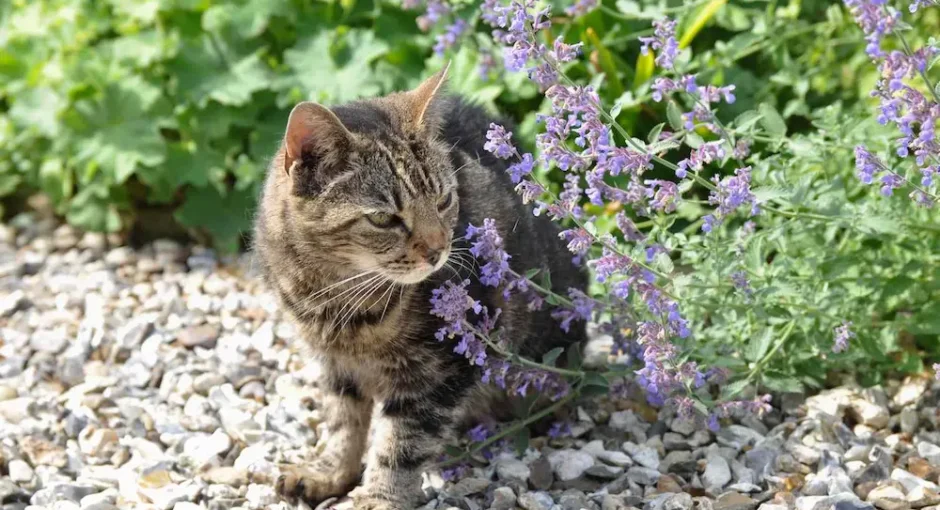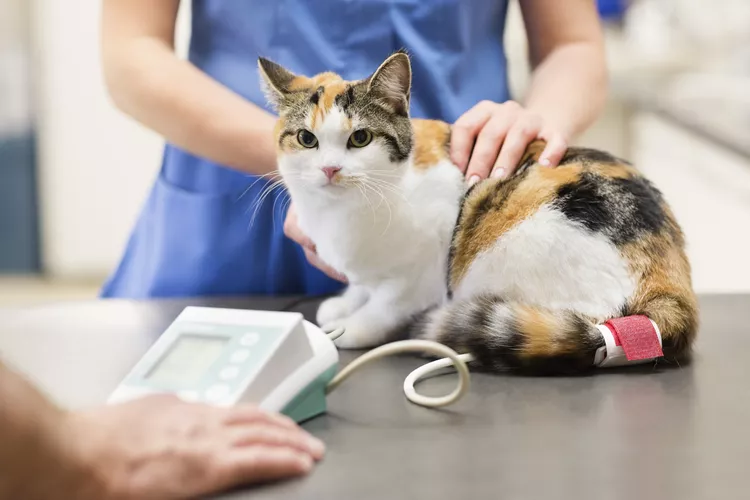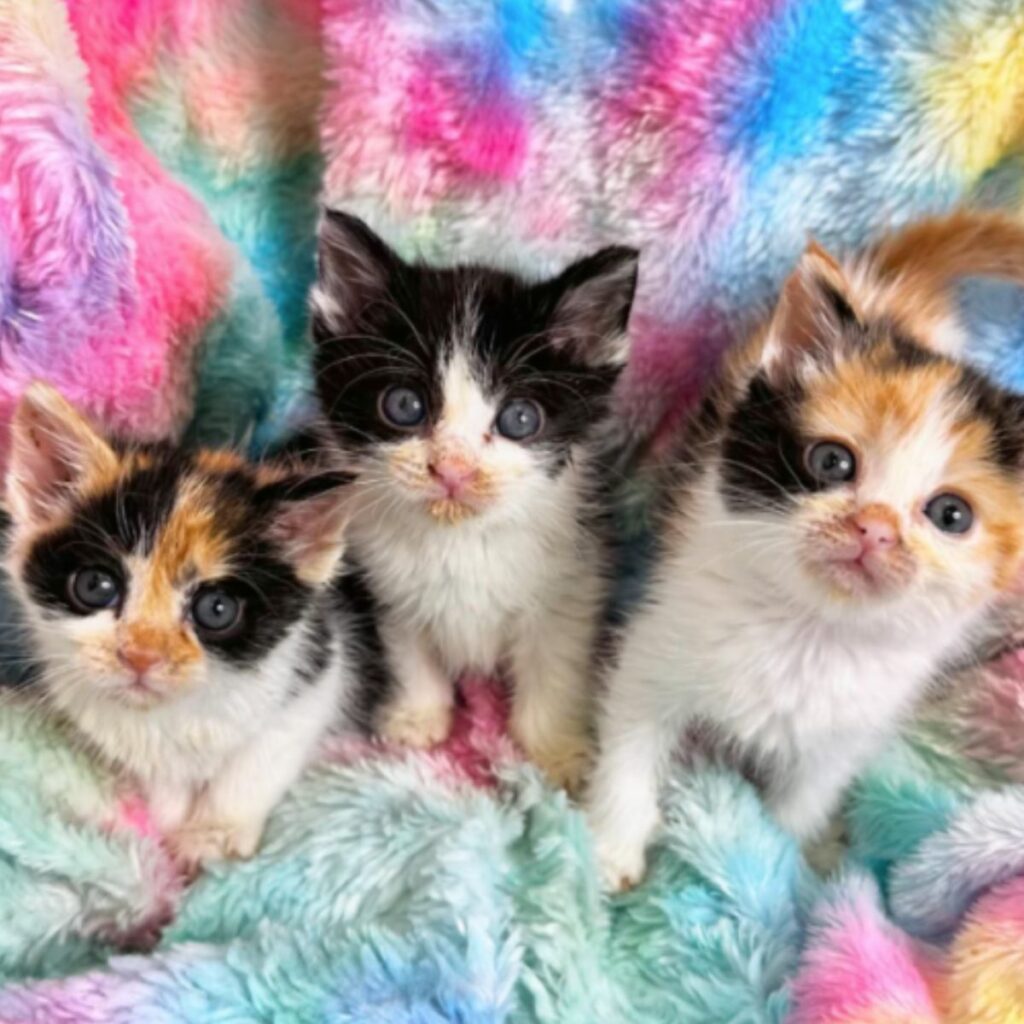I’ve always been fascinated by the peculiar antics of cats under the spell of catnip.
Watching them twist, turn, and purr in sheer bliss, I couldn’t help but wonder: Is catnip a mind-altering drug for our feline friends?
This question led me down a rabbit hole of intriguing research and eye-opening discoveries about this common yet mysterious plant.
Nepeta cataria, more commonly known as catnip, is native to parts of Europe and Asia and has a notorious reputation for inducing a wide range of behaviors in cats.
From euphoric rolling to hyperactive jumping, the response to catnip is as varied as it is fascinating.
Scientists have pinpointed a specific compound, nepetalactone, as the catalyst for these reactions, but the story doesn’t end there.
Recent studies have shed light on an even more practical aspect of catnip’s effects on cats, challenging the long-held belief that its allure is purely for pleasure.
My journey into understanding catnip’s influence on cats reveals a blend of chemistry, biology, and a dash of mystery, making it a topic worth exploring for any cat lover or curious mind.
Read more: Cat Smiles: Are They Real Or Just Our Imagination?
Catnip: What Do We Know About This Cat Drug?
Belonging to the mint family, Nepeta cataria, commonly known as catnip, thrives across Europe and Asia. Its minty scent is attractive to cats, though it’s the compound nepetalactone that truly sparks their interest.
From my findings, nepetalactone enters a cat‘s nasal tissues, binding to receptors that stimulate sensory neurons.
These neurons mirror the response that would be evoked by actual pheromones.
This discovery helps demystify why some cats exhibit euphoric reactions to catnip, while others remain indifferent.
Ronald Siegel’s insight in “Intoxication: The Universal Drive for Mind-Altering Substances,” reveals that approximately 70% of domestic cats show sensitivity to catnip, specifically those who have reached sexual maturity around six months of age.
Interestingly, the reaction to catnip isn’t universal.
It appears that genetics play a crucial role in determining a cat‘s responsiveness.
Also, the response elicited is likened to that of a mild recreational drug effect in humans, causing behaviors ranging from intense playfulness to blissful relaxation in cats.
But, these effects are short-lived, usually peaking for about 10 minutes before dissipating.
Another intriguing aspect is the refractory period; cats won’t react to catnip again until approximately 12 hours have passed, crucial for cat owners to note to avoid overstimulation.
Ingesting catnip seems to have a subdued impact compared to smelling it, which could explain why cats often prefer to sniff and roll in catnip rather than eat it.
This preference emphasises the importance of nepetalactone inhalation in triggering the characteristic euphoric response.
Read more: 150 Awesome Irish Cat Names for Your Lovable Kitty
Why Do Some Cats Not Respond?
I’ve learned that the reaction to catnip can be as individual as the cats themselves.
Genetics play a pivotal role in determining whether a cat will be affected by catnip.
Studies reveal that approximately 30% of cats carry a genetic trait that renders them utterly indifferent to the effects of nepetalactone, the active compound in catnip.
This genetic diversity means that not every cat will display the characteristic euphoric behavior, such as rolling, purring, or leaping, often associated with catnip exposure.
The sensitivity to catnip is inherited and appears to be randomly distributed among the feline population, without any specific breed or region showing a higher predisposition than others.
Interestingly, kittens and senior cats are often less susceptible to catnip’s allure, suggesting that age, alongside genetics, influences the response to this herb.
Kittens under the age of three months typically show no interest or reaction to catnip, and as cats age, their sensitivity can diminish, leading to a lack of response in older cats.
Also, the mode of interaction with catnip also impacts whether a cat might react.
Inhalation of nepetalactone triggers a more intense response compared to ingestion, which accounts for the varied behaviors observed among cats.
Some cats might only require a brief encounter with airborne compounds from catnip to exhibit signs of joy and excitement, while others might not respond at all even with direct contact.
Read more: Petlibro One RFID Cat Feeder Review
How Long Does It Take For Cats To Get High On Catnip?
Cats typically experience the euphoric high of catnip quite swiftly.
From my observations and what research suggests, the initial euphoric reaction in cats can start within 5 to 10 minutes after coming into contact with catnip.
This heightened state of excitement, where cats may roll around, vocalize more than usual, or exhibit playful behavior, often does not last long.
Typically, this intense reaction subsides after about 10 to 15 minutes.
Following this initial euphoric phase, cats often enter a more serene state, possibly wandering off to rest or nap.
This transition from hyperactivity to calmness demonstrates the short-lived nature of catnip’s intoxicating effects on feline behavior.
Can Cats Overdose On Catnip?
First and foremost, let’s address a common concern: can cats overdose on catnip? Based on research and observations, cats are incredibly adept at self-regulating their catnip consumption.
They instinctively know when they’ve had enough of the herb, and most will stop engaging with it once they’ve reached their personal threshold.
This self-regulation mechanism significantly reduces the risk of overdosing.
Experts affirm that catnip is non-toxic to cats, and while it’s possible for them to experience mild gastrointestinal upset if they consume a large amount — think eating a huge pile of fresh catnip leaves — such instances are rare.
If a cat does ingest too much, they might show signs of diarrhea or vomiting, but these symptoms are temporary and typically resolve without the need for intervention.
It’s reassuring to know that there’s no evidence suggesting a fatal risk from consuming catnip.
The concept of an “overdose” in the context of catnip doesn’t align with its effects or how cats interact with it.
Unlike substances that can cause severe physical harm or dependency, catnip offers a benign way for cats to experience a burst of energy or relaxation.
Hence, while moderation is always prudent in all aspects of pet care, the risk of a cat overdosing on catnip is virtually non-existent, given their natural tendency to self-regulate.
Read more: Why Is My Cat Hiding and Sleeping in the Closet?
What’s The Strongest Type Of Catnip?
Not all catnip is created equal.
The strength of catnip’s effect on our cats hinges on the concentration of nepetalactone, the compound responsible for those delightful bouts of euphoria in cats.
Fresh catnip typically offers a higher concentration of this compound, leading to more potent reactions.
But, among the different forms of catnip, one stands out for its potency: the essential oil derived from Nepeta cataria, commonly known as concentrated catnip oil.
Concentrated catnip oil, meticulously extracted from the catnip plant, embodies the essence of what stimulates our cats’ sensory euphoria.
Its high nepetalactone concentration makes it the most potent form of catnip available.
A mere whiff can send cats into a heightened state of pleasure, showcasing behaviors such as intense purring, rolling, and playful hyperactivity.
This form of catnip offers a purity and intensity unmatched by dried catnip leaves or catnip toys, which might have diluted or degraded nepetalactone levels due to processing and aging.
But, it’s crucial to note the potency of concentrated catnip oil demands cautious, sparing use.
Unlike the gentle effect of rubbing a catnip toy against your cat‘s cheek, the oil’s concentrated form can be overwhelming if used excessively.
A drop or two on a toy or scratching post suffices to induce an engaging and enjoyable experience for your cat, ensuring they’re not overstimulated.
To sum it up, when it comes to identifying the strongest type of catnip, concentrated catnip oil takes the crown due to its superior nepetalactone concentration.
But, always remember, with great potency comes the need for responsible use.
This ensures that our beloved cats enjoy the enriching experience that catnip provides, safely and contentedly.
Read more: Petlibro One RFID Cat Feeder Review
What Other Stimulants Affect Cats?
While catnip stands out as a popular choice for stimulating feline fun, it’s not the only natural substance that can bring joy to our furry friends.
Silver vine and valerian root are other safe options that can evoke a similar blissful response in cats.
But, understanding the effects of catnip has opened my eyes to the broader perspective of feline enrichment and well-being.
It’s not just about the immediate joy we see our cats experience.
It’s about enhancing their lives through engagement, stimulation, and a touch of nature’s magic.
By responsibly incorporating these natural stimulants into our cats’ lives, we’re not only providing them with moments of euphoria but also enriching their environment in a way that’s both safe and aligned with their instincts.
So, let’s embrace the joy and curiosity these natural wonders bring to our cats, always mindful of their well-being and happiness.
Read more: 125 Barn Cat Names With Meanings for Your Country Cat







